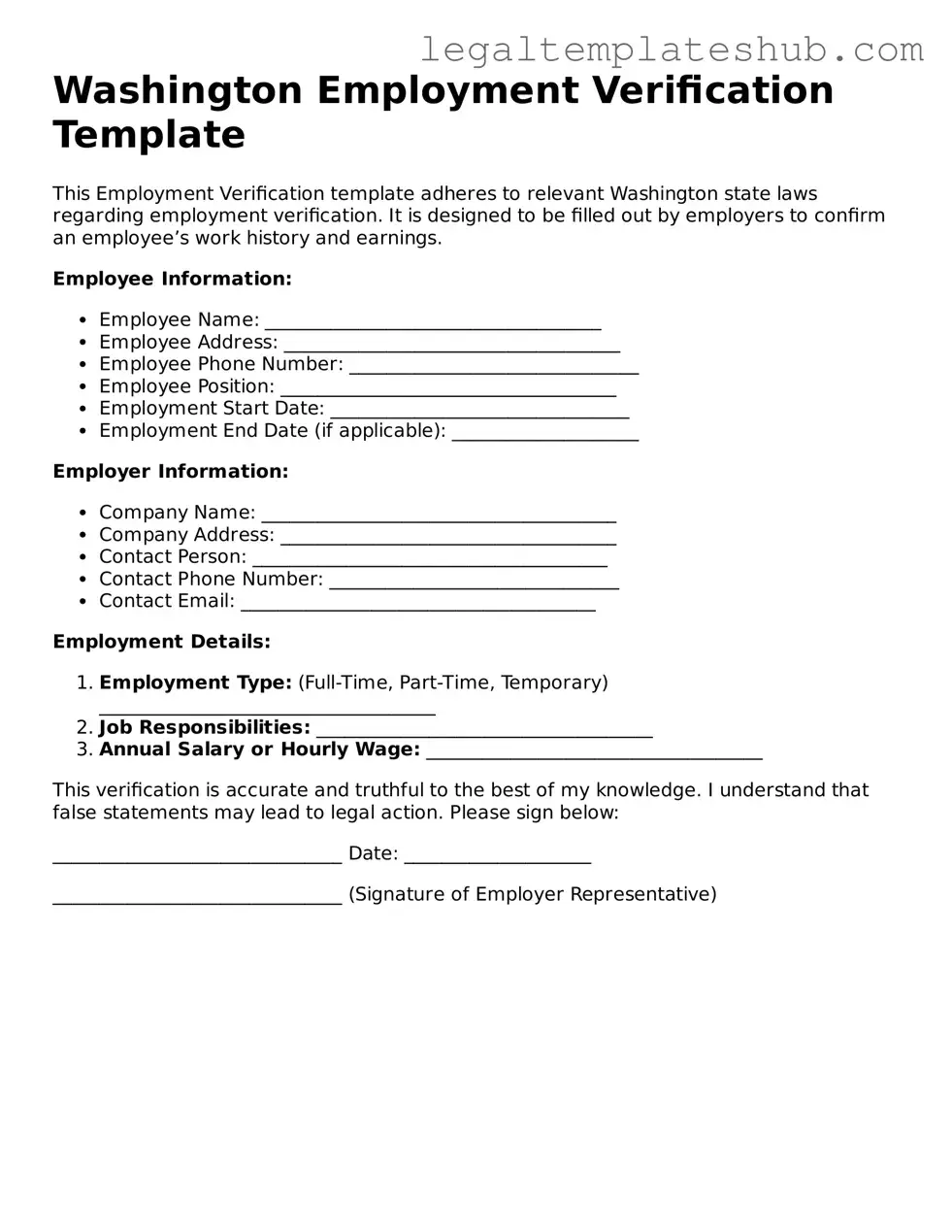Printable Employment Verification Document for Washington
The Washington Employment Verification form is a document used by employers to confirm an individual's employment status and history. This form serves as a crucial tool in various employment processes, including background checks and loan applications. Understanding how to accurately fill out this form can facilitate smoother transactions and enhance trust between employers and employees.
To ensure you are prepared, consider filling out the form by clicking the button below.
Access Editor
